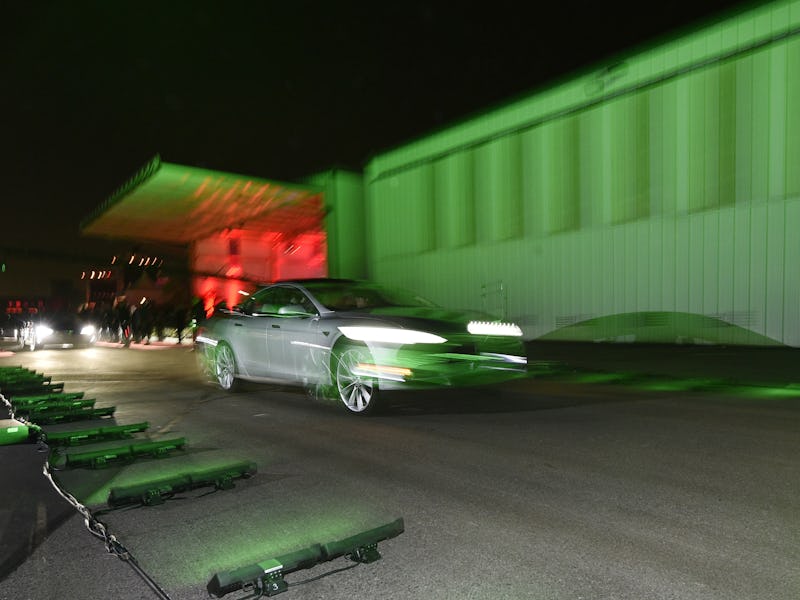5 Bold Suggestions for What Electric Cars Should Sound Like
When electric cars line our streets, we're going to need some new sounds to put in their engines.

Transportation is changing. With Tesla marketing the Model 3 as an affordable electric car, it may not be long before most vehicles are cleaner, greener, and (whisper it) quieter. Free from the noisy motors of gas guzzlers, the soundtrack of our cities may be irrevocably changed.
This could be a perfect moment to rethink what cars and trains should sound like — they’ve got to sound like something, right? For one, absent-minded pedestrians need to be made aware of oncoming vehicles as a matter of public safety. So, what if we picked a sound that’s nicer, or one that stood out better so pedestrians could hear?
Think: Choosing a new sound for transportation would transform the sound of cities! Here are five bold suggestions for how we should change cars.
A horse galloping
Go full retro with the sound of horses trundling through the towns. Generations beforehand made do, so would it really be so bad to revive the pleasant sounds of hooves galloping through the dirt? Bringing the natural sound of animal footsteps into cities would make for a far more pleasant overall experience.
A New York Times story from 1910 reported that the motor car was both cheaper and more efficient than the animal. Technology has progressed to the point now though where people don’t need to decide between horse or car, and in a way there would be something decidedly cool and retro about bringing back the sound of horses:
A train horn
You definitely wouldn’t mistake the sound of a train horn careering down the road. In the interest of pedestrian safety, maybe it would be wise to make cars louder, alerting everyone within a five-mile radius that a car was coming.
It may even cut down on frivolous pollution. With an irritating horn noise accompanying every journey, it would make people think twice before hopping in the car to make the five-minute journey to Wal-Mart.
Beethoven’s “Ode to Joy”
“Ode to Joy” is weird. When Slavoj Zizek wrote for the New York Times about the signing of the European Union’s Lisbon Treaty in 2007, he wrote about how strange the post-signing ceremony was, as officials had asked a choir to sing the song to celebrate.
Since the composition was first performed in 1824, it has become what Zizek described as “a symbol that can stand for anything.” It was used by West and East Germany, competing as one in the 1950s Olympics, instead of a unified national anthem. In Japan it is hailed as a holiday season classic. The EU refers to it as the “European anthem,” transcending national borders.
In a practical sense, it’s tuneful without being annoying. It would be hard to avoid hearing “Ode to Joy” when walking down the street, so pedestrians would be well aware. Using a song would filter through even better for people who are wearing earphones. And what better way to commemorate its compatibility with almost every historical situation than by putting it in every car and train?
A waterfall
This one would be closest to the simple, monotonous noise that a car today makes. The advantage would be more likely acceptance from the public: it’s similar to current cars, but improves on it in a welcome way.
The soothing sounds of the water bubbling would make streets far more pleasant. Onboard sound computers could even change the sound depending on what the car was currently doing. If it was slowing down it could switch to a quieter sloshing sound, giving the effect that the car was powered by water. Lovely:
A crackling fire
There must be something nice about the sound of a fire: the “Fireplace for Your Home” DVD has a four-and-a-half star rating on Amazon, with nearly 600 happy customers.
The soothing, crackling sound would definitely make long car journeys nicer. Plus, in terms of pre-automobile forms of power, fire trumps horses galloping by a fair few years. Who doesn’t want to pretend that they have a car solely powered by fire?
The major downside is that it would be very subtle and quiet. Sure, a fire is nice to listen to, but to be honest I probably would not hear a fire driving towards me at 70 miles per hour.